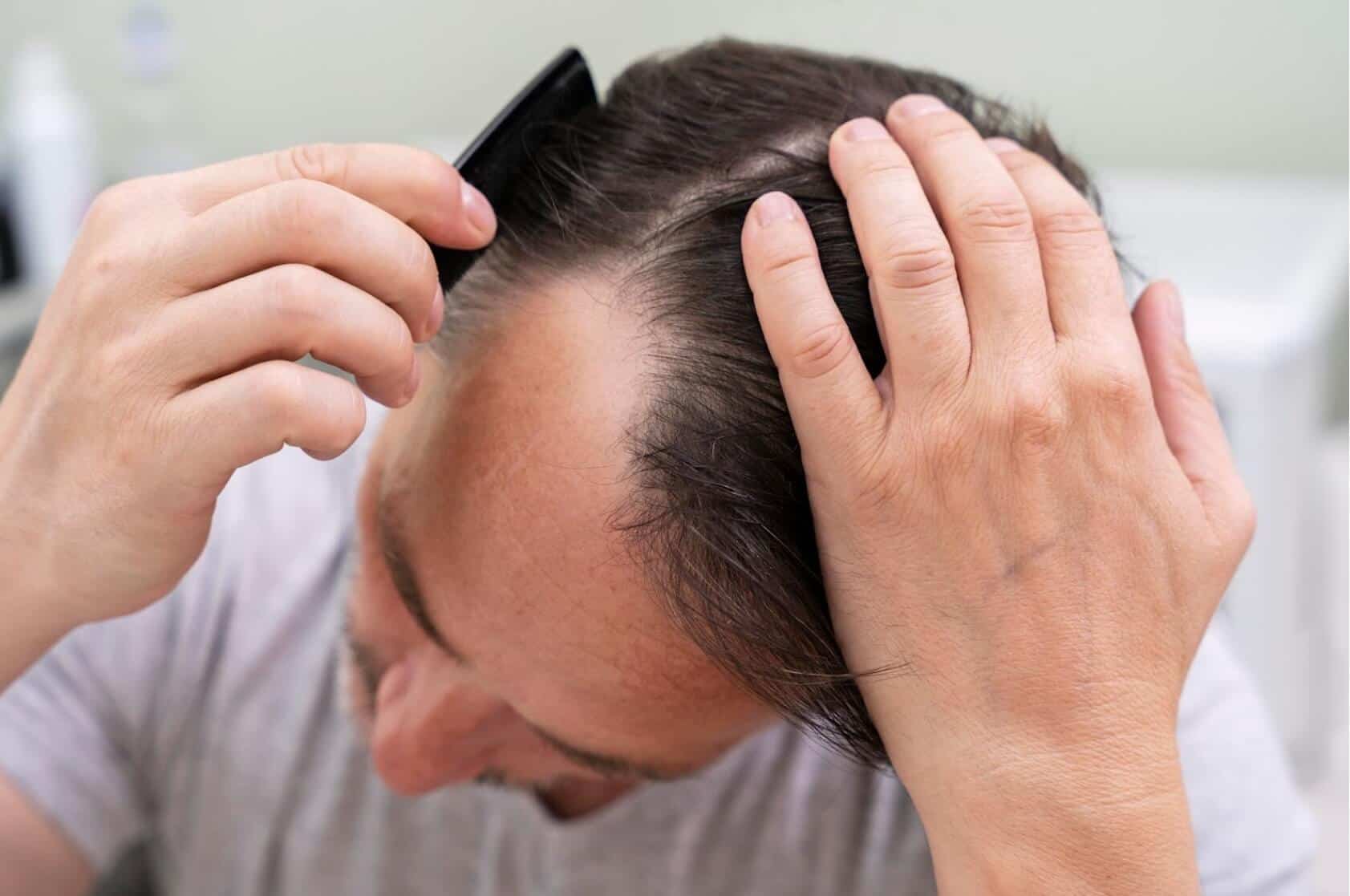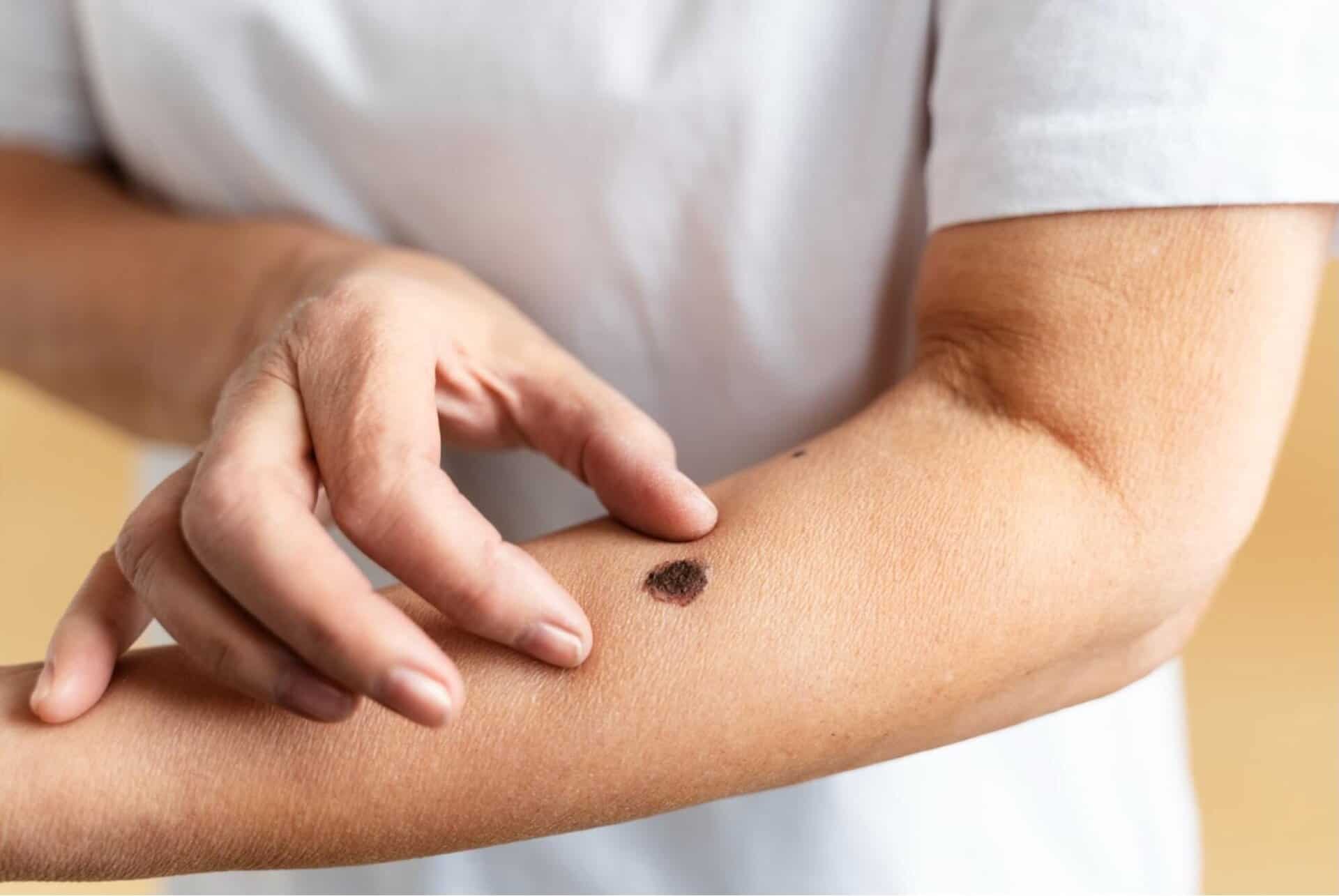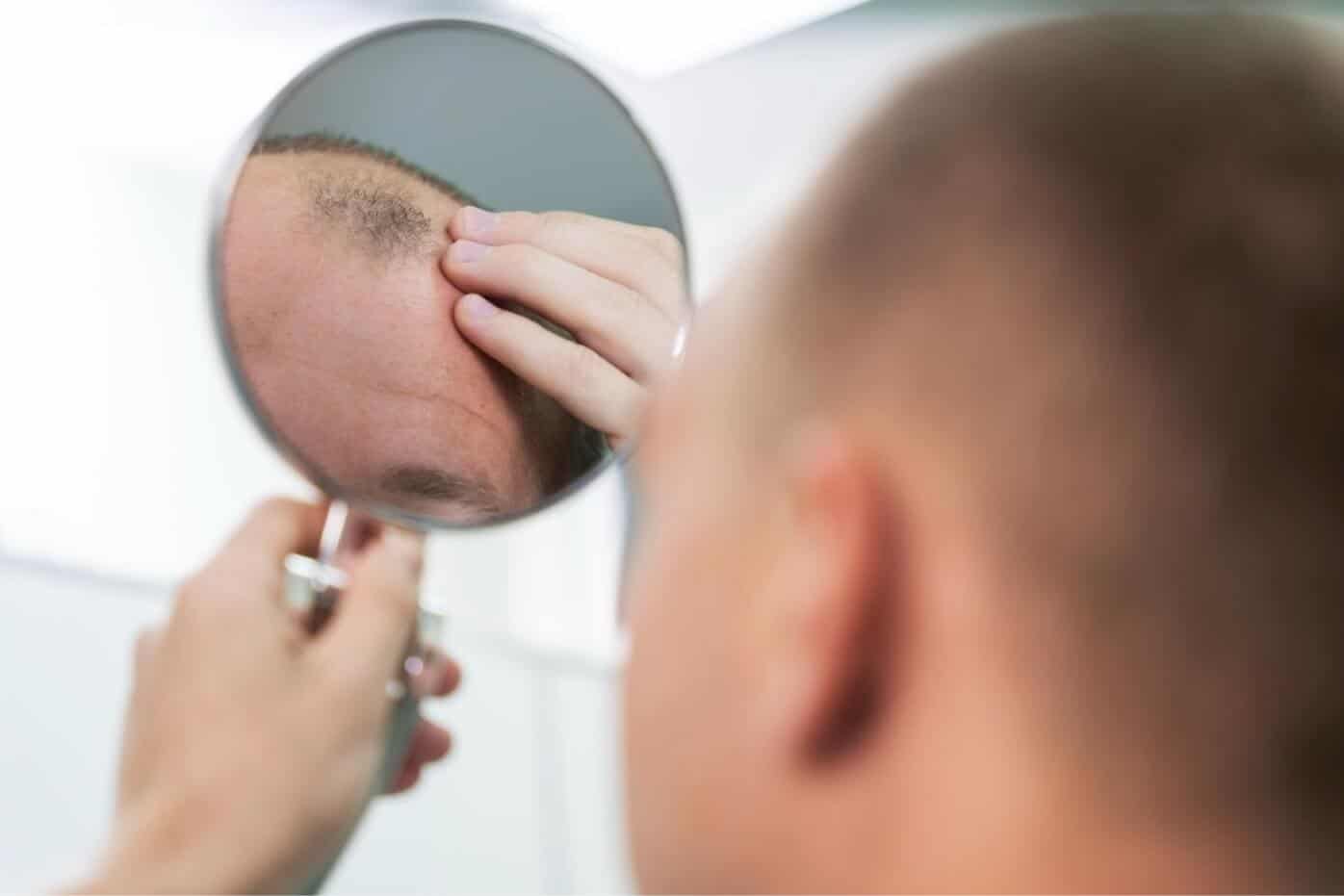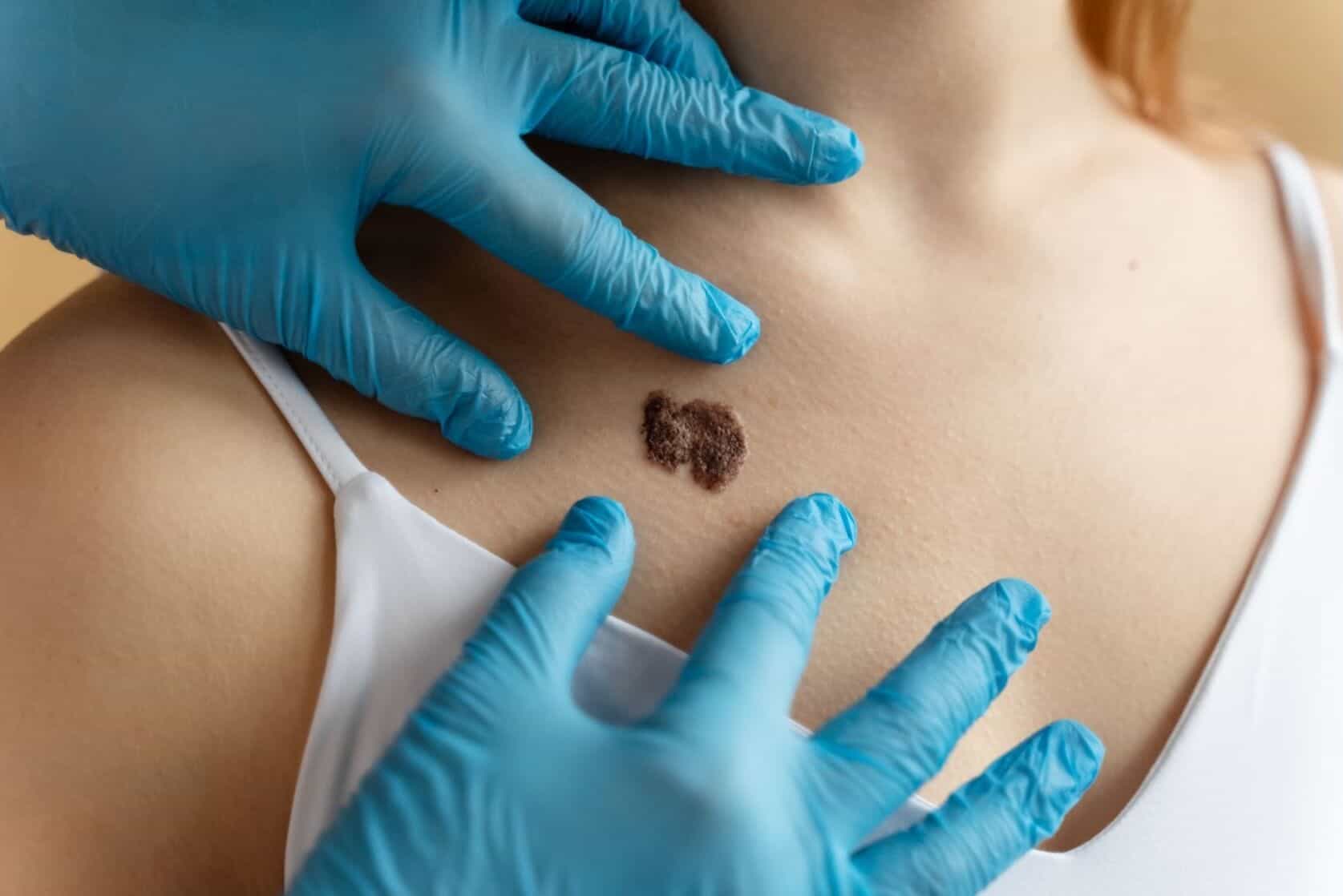Yes, be attentive to changes in flat moles. While most alterations are harmless, sudden changes in color, shape, border irregularity, or size could indicate melanoma. Use the ABCDE method for monitoring and consult a dermatologist promptly for concerning changes.
- Dr Sharon Crichlow
- Reading Time: 10 Mins
Noticing a change in a flat mole can trigger immediate concern. Is it normal aging or something more serious? While most mole changes are benign, some can signal early skin cancer.
Knowing which changes matter could literally save your life. This article helps you determine when to relax and when to seek medical attention for changing flat moles.
Key Takeaways
- Most mole changes are benign, but sudden alterations in color, shape, or size warrant medical attention.
- Use the ABCDE method (Asymmetry, Border, Color, Diameter, Evolution) to monitor moles effectively at home.
- Higher risk individuals, those with 50+ moles, fair skin, or a family history of skin cancer, should schedule regular professional skin checks.
Table of Contents
What Are Flat Moles?
Flat moles, medically known as melanocytic naevi, are common skin growths that appear as flat or slightly raised spots on the skin. They develop when pigment-producing cells called melanocytes cluster together rather than spreading evenly throughout the skin.
These moles typically range from light brown to black in colour, depending on your skin tone and the depth of the melanocytes. They can appear anywhere on the body but are most commonly found on sun-exposed areas like the face, arms, and legs.
Unlike raised moles, flat moles don’t protrude significantly from the skin surface. They feel smooth to the touch and generally have well-defined borders in their natural state.
Most people have between 10 and 40 moles on their bodies by adulthood. They’re particularly common in fair-skinned individuals but occur in people of all skin types. Some appear during childhood and adolescence, while others develop later in life.
Concerning Changes in Flat Moles
Not all changes to flat moles indicate danger. Understanding the difference between normal variations and concerning alterations is crucial for peace of mind and timely intervention when necessary.
Normal changes often occur gradually and symmetrically. A mole might darken slightly after sun exposure or during hormonal shifts like pregnancy. It may also fade with age or grow proportionally as the body develops, especially during childhood and adolescence.
Concerning changes typically involve asymmetrical alterations in size, shape, colour, or border. Research from the National Cancer Institute indicates that “the first sign of melanoma is a change in the shape, colour, size, or feel of an existing mole.”
| Normal Changes | Concerning Changes |
|---|---|
| Gradual, uniform darkening | Sudden or patchy darkening |
| Slow, proportional growth | Rapid or asymmetrical enlargement |
| Slight fading with age | Uneven fading or multiple colours developing |
| Minimal changes in texture | Becoming raised, itchy, or developing a crust |
| Maintaining regular borders | Developing irregular, notched borders |
It’s reassuring to know that the transformation rate of moles into melanoma is very low. Research by Tsao et al. found this rate to be ≤0.0005% (≤1 in 200,000) for individuals under 40, increasing to 0.003% (1 in 33,000) for men over 60.
However, a systematic review published in Medical News Today revealed that 29% of melanomas arise from existing moles. This underscores the importance of monitoring any changes, however slight they may seem.
Why Moles Change
Flat moles may change for many reasons, both benign and concerning.
Age-related changes: As we age, moles often fade or disappear entirely. This gradual lightening is typically harmless and most common in older adults.
Sun exposure: UV radiation can darken existing moles temporarily or permanently. This is why consistent sun protection is crucial for mole health.
Hormonal fluctuations: Pregnancy, puberty, and hormone medications can trigger mole darkening or slight enlargement due to increased melanin production.
Genetic factors also play a significant role. People with family histories of melanoma or those with dysplastic naevi syndrome (multiple unusual-looking moles) face higher risks of developing melanoma.
The ABCDE Method for Home Monitoring
The ABCDE method provides a systematic approach to monitoring moles at home.
| Criterion | What to Look For |
|---|---|
| Asymmetry | Do both halves of the mole look the same? Melanomas often have irregular shapes. |
| Border | Is the border irregular, ragged, notched, or blurred? Melanomas often have uneven edges. |
| Colour | Is the colour uniform? Melanomas may display multiple colours or uneven distribution of colour. |
| Diameter | Is the mole larger than 6mm (about the size of a pencil eraser)? Larger moles warrant closer monitoring. |
| Evolving | Has the mole changed over time in size, shape, colour, or elevation? Has it started to itch, bleed, or crust? |
For effective home monitoring, examine your skin in a well-lit room with a full-length mirror. Use a handheld mirror for hard-to-see areas like your back. Take photos of concerning moles and date them for comparison over time.
Perform a thorough skin check monthly and make a note of any changes. Remember to check often-overlooked areas like your scalp, between toes, under nails, and genital areas.
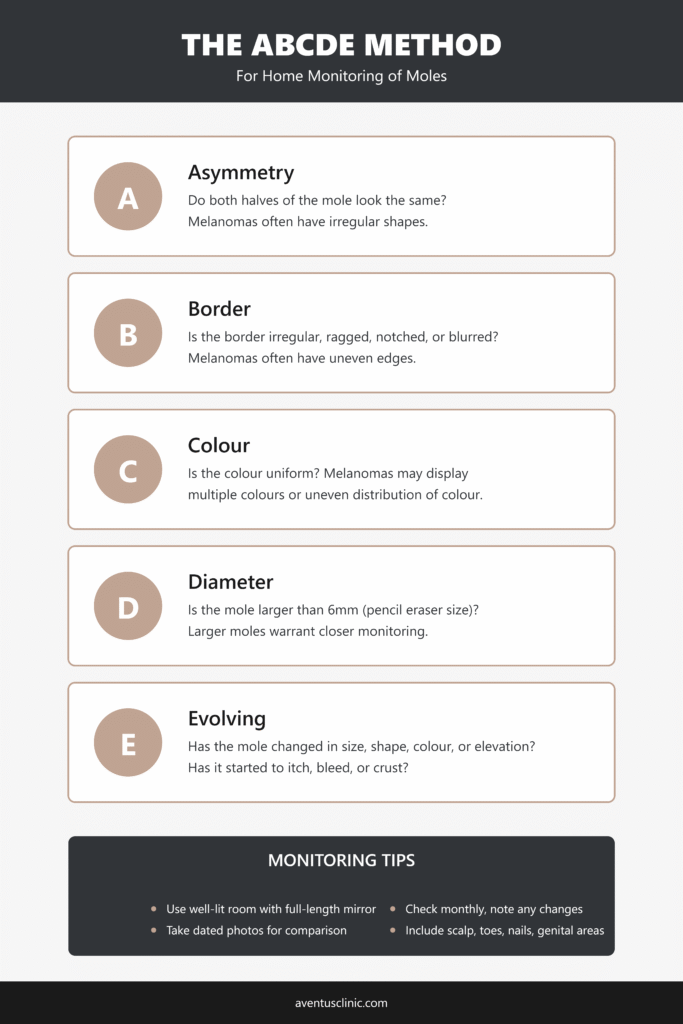
When to See a Dermatologist
While regular self-examination is important, certain situations warrant prompt professional evaluation.
A mole that shows one or more of the ABCDE warning signs should be checked promptly. Research published in BMJ Open confirmed that the ABCD rule has high sensitivity for identifying potential melanomas.
New moles appearing after age 30 require professional assessment, as most normal moles develop earlier in life. Any mole that bleeds, itches, or becomes painful without an obvious cause should be evaluated immediately.
People with risk factors should schedule more frequent professional skin checks. These factors include:
- A personal or family history of skin cancer
- More than 50 moles on your body
- Atypical or dysplastic moles
- Fair skin that burns easily
- History of severe sunburns, especially in childhood
- Weakened immune system
At Aventus Clinic in Hertfordshire, we offer comprehensive mole assessment and removal services. Our mole removal procedures are typically performed under local anaesthesia to ensure comfort.
During the procedure, we thoroughly examine the mole, clean the area with an antiseptic solution, and remove the mole through simple excision. The specimen is sent for laboratory analysis, and the area is carefully stitched and dressed to promote optimal healing.
Final Note
The ABCDE method provides an excellent framework for home monitoring, but professional evaluation remains crucial for any concerning changes. While most mole changes are benign, vigilance saves lives.
For peace of mind about any changing moles, take advantage of our free online assessment at Aventus Clinic. Our expert team can help determine whether your changing mole needs further evaluation or treatment.
Frequently Asked Questions
Can flat moles turn into melanoma?
Yes, though the risk is low. Research indicates that for a person under 40, the annual transformation rate is about ≤0.0005% (≤1 in 200,000). This risk increases with age, sun exposure, and genetic factors.
Is it normal for a mole to darken over time?
Gradual, uniform darkening, especially after sun exposure or during hormonal changes like pregnancy, is often normal. However, rapid or irregular darkening should be evaluated by a dermatologist.
Do all mole changes mean cancer?
No. Most mole changes are benign. Research from DermNet NZ indicates that less than 3% of all changing lesions are melanoma. However, changes meeting ABCDE criteria warrant professional assessment.
How quickly can a mole become dangerous?
Melanomas can develop at varying rates. Some evolve slowly over the years, while others may change more rapidly over months. Regular monitoring helps catch concerning changes early when treatment is most effective.
What's the difference between a freckle and a flat mole?
Freckles are small, light brown spots that typically appear in clusters and often fade in winter. Flat moles are usually darker, don't fade seasonally, and contain clusters of melanocytes rather than just increased melanin.





